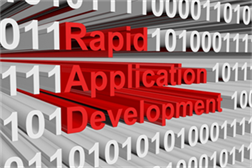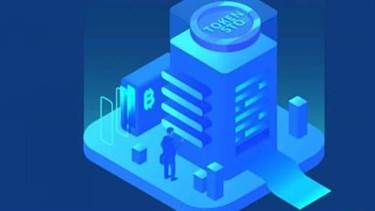
Smart Home Iot Standard Matter Officially Launches
Содержание
It is used whenever a large number of services need to be provided over a large area at different geographical locations. ServiceNow doubled down on its commitment to take the complexity out of digital transformation projects with a new version of its… To avoid network overprovisioning, teams should review baselines and roadmaps, assess limitations and consider business strategy … While network teams are responsible for deploying the elements of a zero-trust network, security teams should also be involved in… A network disaster recovery plan should include components like documentation, emergency contacts, step-by-step procedures, …
Fifth generation infrastructure refers to a network of small and macro cell base stations with edge computing capabilities. It comprises a radio access network , distributed antenna system , core network, and backhaul as standard hardware. 5G infrastructure also relies on software-defined networking , network functions virtualization , mobile edge computing , and Fog Computing technologies. These solutions offer high throughput, mobility, connection density, and multi-gigabit per second peak speed. Besides this, it provides low latency coverage for big data streams that power applications like the Internet of Things devices, semi-autonomous vehicles, and augmented reality . The global 5G infrastructure market is primarily being driven by significant growth in the telecommunications industry.

In a strictly foggy environment, intelligence is at the local area network , and data is transmitted from endpoints to a fog gateway, where it’s then transmitted to sources for processing and return transmission. Also in October 2017 the Institute of Electrical and Electronics Engineers Standards Association said it will use the OpenFog Reference Architecture as the basis for its work on fog standards. As Helder Antunes writes the newly formed IEEE P1934 Standards Working Group on Fog Computing and Networking Architecture Framework expects to complete the first iteration of its work by April 2018. You can read more about the fog computing and networking standardization efforts/progress by the IEEE workgroup in our post on fog standardization.
Wayve Partners With Microsoft To Scale Ai For Autonomous Vehicles
This report forecasts revenue growths at global, regional, and country levels and provides an analysis of the industry trends in each of the sub-segments from 2016 to 2025. For the purpose of this study, Grand View Research has segmented the global fog computing market based on solution, hardware, application, and region. Organizations using fog computing have witnessed an improvement in their productivity by moving their computation to the nodes, offering significant business benefits and insights. This architecture filters the voluminous data and pushes only relevant data to the cloud, thereby supporting actionable analytics and real-time capabilities.
Popular fog computing applications include smart grids, smart cities, smart buildings, vehicle networks and software-defined networks. The key players in the industry include Cisco Systems, Inc., Nebbiolo Technologies, PrismTech, and FogHorn Systems. Companies are engaging in partnerships and collaborations to develop effective solutions in the fog and edge landscape. For instance, in June 2016, IBM Corporation and Cisco Systems, Inc. announced a partnership to integrate Watson’s IoT cloud software with Cisco’s new fog computing platform. As the demand for low latency and decentralized platforms is gaining prominence, there is a growing trend toward distributed data storage and processing approach.

With the increasing demand for IoT devices, the prices for utilizing 3G and 4G networks are expected to decline further, thereby driving reductions in the recurring operational expenses for organizations. Because the initial data processing occurs near the data, latency is reduced, and overall responsiveness is improved. The goal is to provide millisecond-level responsiveness, enabling data to be processed in near-real time.
What Are The Benefits Of Fog Computing?
The need for leveraging the advantage of hybrid IT environments to deliver flexibility and agility is driving the industry growth. Additionally, the region has witnessed a high adoption of cloud services in key economies of China, Japan, and Australia, thereby providing growth avenues for the implementation of fog network. Moreover, the Indian Government’s Make in India campaign is expected to boost the smart manufacturing growth, thereby propelling the demand for streaming data from the cloud and back. Fog Computing is the term coined by Cisco that refers to extending cloud computing to an edge of the enterprise’s network. It facilitates the operation of computing, storage, and networking services between end devices and computing data centers. Remember, the goal is to be able to process data in a matter of milliseconds.

This makes processing faster as it is done almost at the place where data is created. CIOs should help evaluate management goals to support long-term strategy. Fog computing reduces the volume of data that is sent to the cloud, thereby reducing bandwidth consumption and related costs. If you need specific information that is not currently within the scope of the report, we will provide it to you as a part of the customization. Mobileye is a clear leader in self-driving vehicles and its IPO, even among difficult economic conditions, should reflect that.
Fog Computing: Many Benefits But Not Always The Best Solution
You could say that in a sense, fog computing is somewhat of a gatekeeper to the cloud environment. In contrast, in edge computing, you’re closer to the endpoint in the end equipment/environment. This doesn’t mean that edge computing occurs on IoT devices, of course. Yet, the computation typically is only one or a few hops away, and the resources for processing, storage, etc. happen at the edge via micro data centers.
An IoT sensor on a factory floor, for example, can likely use a wired connection. However, a mobile resource, such as an autonomous vehicle, or an isolated resource, such as a wind turbine in the middle of a field, will require an alternate form of connectivity. 5G is an especially compelling option because it provides the high-speed connectivity that is required for data to be analyzed in near-real time. In addition, having all endpoints connecting to and sending raw data to the cloud over the internet can have privacy, security and legal implications, especially when dealing with sensitive data subject to regulations in different countries.
- “Matter leverages Wi-Fi’s sophisticated network efficiency, global pervasiveness of more than 18 billion devices in use today, and robust standards-based foundation to help deliver the IoT vision,” said Edgar Figueroa, President and CEO of the Wi-Fi Alliance.
- As healthcare organizations are increasingly deploying IoT technologies to their infrastructure, there has been a need for ensuring a smarter communication network.
- The CHIPS and Science Act allows the U.S. to invest in critical technologies such as quantum computing and artificial …
- Additionally, hardware manufacturers are collaborating with machine learning and IoT vendors to deliver routers and gateways that support fog computing.
- This report forecasts revenue growths at global, regional, and country levels and provides an analysis of the industry trends in each of the sub-segments from 2016 to 2025.
- It’s often called an extension of the cloud to where connected IoT ‘things’ are or in its broader scope of “the Cloud-to-Thing continuum” where data-producing sources are.
For consumers, this has resulted in some homes having multiple hubs for their smart devices and not all working together seamlessly . The major fog computing milestone no doubt was the release of the OpenFog Reference Architecture as depicted below, describing the various interrelationships of fog computing components. You can also learn more about that OpenFog Consortium Reference Architecture framework in the video at the bottom of this post. As long as a device has the capacities to do what it needs to do at the edge, it can be a fog node.
In older research, from March 2017, Forrester Research stated that IoT will spawn a new infrastructure market with edge computing as the report name says. You can, among several others, download it via the Microsoft Azure resource center. In the past three years, several companies have shifted their focus towards providing comprehensive fog computing solutions apart from their core business processes. In October 2015, Dell announced the launch of its Edge Gateway 5000 series to provide an edge computing solution in building and factory automation sectors. Cellular and network communications are witnessing continuous price reductions that support the connectivity of IoT devices.
There has been a significant transition from cloud to fog, as the latter offers low latency and widespread geographic distribution along with less probability of cyber-attack on data enrouter. Moreover, the evolution of 5G technology has led to the emergence of an edge computing data architecture with low latency issues and bandwidth bottleneck elimination. Additionally, the evolution of IoT into Internet of Everything requires high-speed data analytics and shorter response time. The decentralized architecture overcomes these challenges by bringing the endpoint devices closer to the cloud.
The competitive landscape of the 5G infrastructure market has been studied in the report with the detailed profiles of the key players operating in the market. As the chart released at the occasion below shows, 51.6 percent of revenue goes to hardware, followed by fog applications (19.9 percent) and services (15.7 percent). According to research, released end October 2017 at the occasion of the Fog World Congress, the fog computing market globally is expected to exceed $18 billion by 2022. The gateways segment contributed significantly to the industry growth in 2016 due to the need for preprocessing data that is sent to the cloud. These gateways strengthen the infrastructure by processing the data, which enables the solutions to meet the requirements of low latency responses. Scheduling tasks between host and fog nodes along with fog nodes and the cloud is difficult.
How Does Fog Computing Work?
However, the company does have growing competition from the likes of Wayve, Cruise, and StradVision to contend with. The company’s revenue growth comes off the back of numerous major announcements in recent years. The fairly ubiquitous backing of Matter from almost all major tech companies will go a long way to finally unlocking the full potential of smart homes.

Its distributed approach addresses the needs of IoT and industrial IoT , as well as the immense amount of data smart sensors and IoT devices generate, which would be costly and time-consuming to send to the cloud for processing and analysis. Fog computing reduces the bandwidth needed and reduces the back-and-forth communication between sensors and the cloud, which can negatively affect IoT performance. The connected vehicles segment captured a revenue share of over 25% in 2016 as it provides real-time analytics and informed decisions on driving patterns. Moreover, fog computing reduces the transfer of large data of video and audio recordings generated by video and dashboard cameras. The need for streamlining traffic and effective transportation management is aiding the industry growth by enhancing the connectivity of transport systems.
Industry Insights
In 2020, that grew to $967 million before jumping to $1.4 billion in 2021. Intel reportedly expected Mobileye to be valued at $50 billion but is now anticipating somewhere around $30 billion due to global economic uncertainties. A global certification program – which uses eight authorised test labs – has also been launched, enabling device manufacturers to show their product meets the Matter standard and features interoperability. The Connectivity Standards Alliance is responsible for creating, evolving, and managing the Matter standard. Today, the CSA and its members released the Matter 1.0 standard and certification program.
How And Why Is Fog Computing Used?
Since the distance to be traveled by the data is reduced, it results in saving network bandwidth. DataOps is a growing tool for organizations looking to efficiently distribute accurate data to users. The company said it’s expanding beyond vulnerability management to address the growing attack surface and the challenges … The CHIPS https://globalcloudteam.com/ and Science Act allows the U.S. to invest in critical technologies such as quantum computing and artificial … Elon Musk is reported to have told Twitter he will go through with buying the tech firm, just two days before he was to… Mobileye’s filing with the SEC highlights steady revenue growth over the past few years.
Moreover, these technologies are aiding organizations in overcoming the challenges of centralized data processing. According to IDC, 43 percent of all IoT data will be processed at the edge before being sent to a data center by 2019, further boosting fog computing and edge computing. This is expected to change over time as big data and AI drive analysis at the edge with more heavy data processing at that edge. Digital services including telemedicine are expected to remain popular even after the pandemic is contained, thereby ensuring strong growth in the communication infrastructure industry. The connected healthcare segment captured a revenue share of close to 15% in 2016. Fog streamlines the healthcare cloud to offer users better control over data storage and access to the necessary information.
Our team, which includes experienced researchers and analysts from various industries, is dedicated to providing high-quality data and insights to our clientele, ranging from small and medium businesses to Fortune 1000 corporations. Use cases include smart highways, autonomous road vehicles, smart railways, maritime and drones and applications obviously depend on the use cases within a vertical. In smart railways, for example think about Positive Train Control safety systems, scheduling and dispatch, energy/fuel optimization, passenger comfort and crew communications. Just as edge computing does, fog computing plays an important role in the evolutions of the IoT platform market. If the data is highly time-sensitive it is sent to the fog node which is closest to the data source for analysis.
As you’ll read and see below fog computing is seen as a necessity for IoT but also for 5G, embedded artificial intelligence and ‘advanced distributed and connected systems’. In fog computing, all the storage capabilities, computation capabilities, data along with the applications are placed between the cloud and the physical host. Our offerings include comprehensive market intelligence in the form of research reports, production cost reports, feasibility studies, and consulting services.

